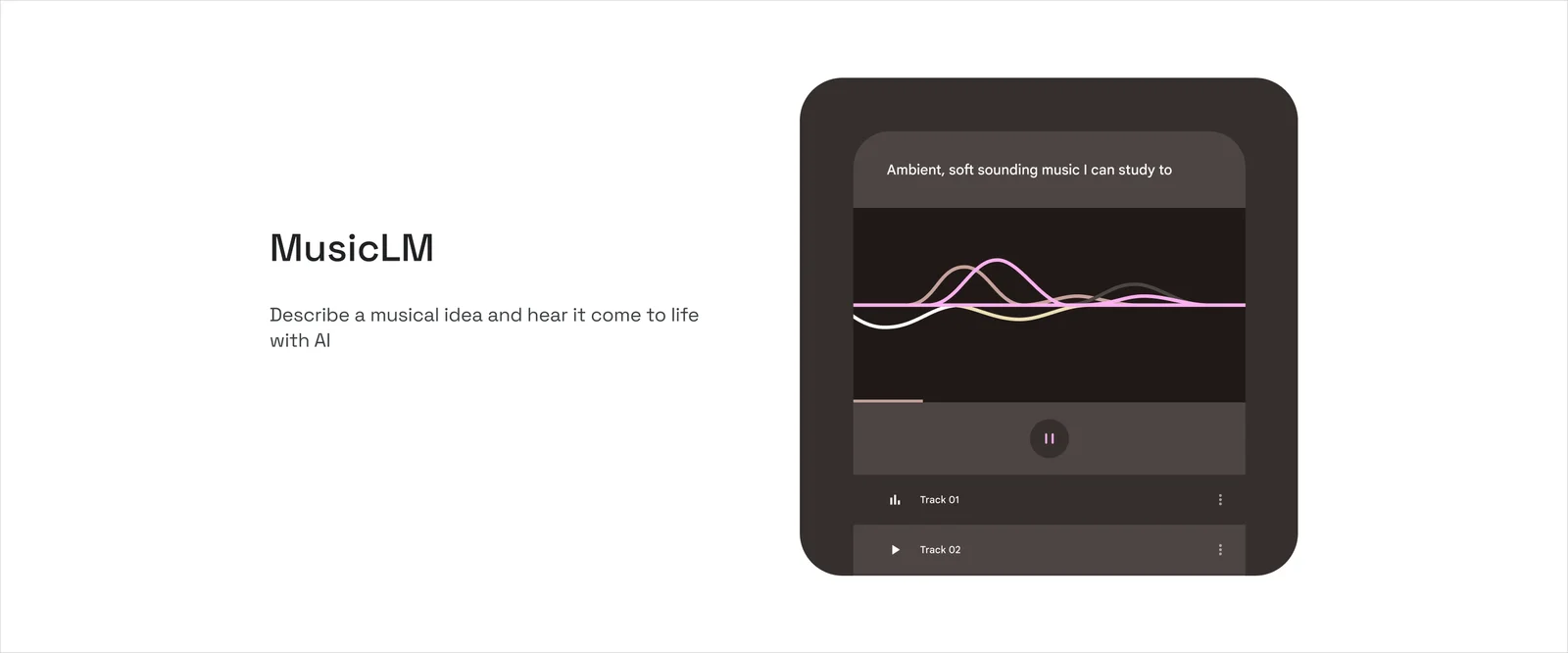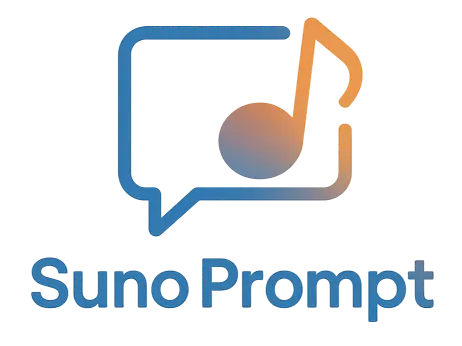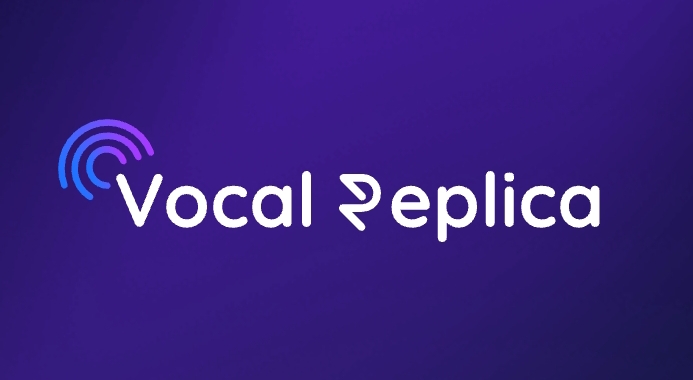MusicLM by Google

High-quality music captions from musicians
music captioning music interpretation musicians tool digital music platforms music education AI in musicTool Information
| Primary Task | Text to music |
|---|---|
| Category | media-and-content-creation |
| Sub Categories | music-generation music-composition |
| Open Source | Yes |
| Website Status | 🟢 Active |
MusicCaps is an innovative tool, also featured on Kaggle, skilled in generating high-quality music captions. Primarily developed and utilized by musicians, this tool excels in providing informative and contextually accurate descriptions of various music pieces. The core uniqueness of MusicCaps revolves around its ability to not merely generate generic statements, but focus on creating well-informed captions, thereby reflecting the depth of the music with a higher degree of precision and artistic perception. The tool's application spans across a broad spectrum, be it for educational purposes to understand music better, or enhance the user's experience on digital music platforms by providing captivating descriptions. Its ease of use and comprehensive functionality make MusicCaps an excellent asset for anyone seeking to heighten their musical experience or work.
Kaggle is an online community platform designed for data scientists and machine learning enthusiasts. Founded in 2010, it became part of Google Cloud in 2017. Headquartered in California, Kaggle employs between 1,001 and 5,000 people and has over 8 million registered users.
The platform is well-known for hosting data science competitions, allowing participants to tackle real-world problems across various industries, including pharmaceuticals, finance, and retail. Kaggle also provides access to a wide range of datasets for exploration and project development. Users can collaborate on projects, share code, and learn from one another. Additionally, Kaggle offers GPU-integrated notebooks that enable users to run code directly in their browsers, simplifying the data science workflow.
| Pros |
|---|
|
| Cons |
|---|
|
Frequently Asked Questions
1. What is MusicLM by Google MusicCaps?
MusicLM by Google MusicCaps is a specialized dataset composed of music clips, each labeled with an aspect list and a free-text caption prepared by musicians.
2. How many clips does the MusicLM by Google MusicCaps contain?
The MusicLM by Google MusicCaps contains 5,521 clips.
3. What is the duration of each clip in the MusicLM dataset?
Each clip in the MusicLM dataset has a duration of 10 seconds.
4. What is an aspect list in the context of MusicLM?
In the context of MusicLM, an aspect list is a collection of adjectives that depict how the music sounds. For instance, it can include descriptions such as 'pop, tinny wide hi hats, mellow piano melody, high pitched female vocal melody, sustained pulsating synth lead'.
5. What does a free-text caption in MusicLM refer to?
The free-text caption in MusicLM pertains to a detailed description of how the music sounds, incorporating aspects like the instruments involved and the overall mood of the piece.
6. Is there a difference between the aspect list and free-text caption in the MusicLM data?
Yes, there is a difference between the aspect list and free-text caption in the MusicLM data. The aspect list consists of adjectives describing the sound of music, while the free-text caption provides a more elaborate description, including details like instrument use and mood.
7. Where is the MusicLM database sourced from?
The MusicLM database is sourced from the AudioSet dataset.
8. How is the MusicLM dataset split?
The MusicLM dataset is divided into an evaluation (eval) and training (train) split.
9. What license is the MusicLM database licensed under?
The MusicLM database is licensed under a Creative Commons BY-SA 4.0 license.
10. What metadata is each clip in the MusicLM database labeled with?
Each clip in the MusicLM database is labeled with metadata such as YT ID, start and end position in the video, labels from the AudioSet dataset, aspect list, caption, author ID, a flag indicating if it is part of the balanced subset, and a flag indicating if it is part of the AudioSet eval split.
11. What is the purpose of the YT ID label in MusicLM database?
The YT ID label in the MusicLM database points to the YouTube video in which the labeled music segment appears.
12. What does 'is balanced subset' mean in MusicLM's metadata?
'Is balanced subset' in MusicLM's metadata indicates whether the music clip is part of a selection that has been balanced to avoid overrepresentation of certain elements.
13. What is the intended use of the MusicLM dataset?
The intended use of the MusicLM dataset is for music description tasks, including music captioning and interpretation.
14. What are the potential applications for MusicLM?
The potential applications for MusicLM include usage in digital music platforms, music education, AI in music, music description, artificial perception, music experience enhancement, music analytics, and AI innovation.
15. What makes MusicLM unique compared to other similar AI tools?
MusicLM's uniqueness lies in its ability to generate not just generic statements, but to create well-informed captions that accurately reflect the nuances and depth of each music piece.
16. How can MusicLM be used in music education?
In terms of music education, MusicLM can be used to provide a deeper understanding of music, offering detailed descriptions of music pieces, which include the types of instruments used, the mood of the piece, and other sound characteristics.
17. How does the MusicLM tool enhance the user experience on digital music platforms?
MusicLM enhances user experience on digital music platforms by providing immersive and detailed descriptions of music. It allows users to get a feel of the music prior to listening, thereby enhancing the overall musical experience.
18. Is MusicLM easy to use?
Yes, MusicLM is user-friendly and designed with ease of use in mind.
19. Can MusicLM provide accurate descriptions of various music pieces?
Yes, MusicLM can produce accurate descriptions of various music pieces. It was developed with a primary focus of providing contextually accurate and highly informative descriptions.
20. What is MusicLM's presence or reputation on Kaggle like?
As featured on Kaggle, MusicLM by Google MusicCaps has a strong presence and reputation for providing high-quality music captions written by musicians.
 AI Tool Buzz
AI Tool Buzz
 Suno AI
Suno AI Producer.ai
Producer.ai Donna
Donna Suno Prompt
Suno Prompt Vocal Replica
Vocal Replica